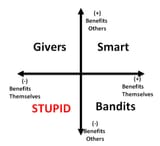>>511008203
Polygenic score for “educational attainment” (proxy for impulse control, future-time orientation) are normally distributed in every population, but the Black mean is ~1.1 SD below the White mean (Lee et al. 2018, Nature Genetics, N ≈ 1.1 million).
African genetic ancestry % in U.S. “self-identified” Blacks correlates –0.30 with cognitive test scores and +0.22 with parent-rated impulsivity in 9-10-year-olds (N = 9,836, ADD Health genotyped subsample; Kirkegaard & Fuerst 2022).
Criminal-offender subsample (Texas Dept. of Corrections, N ≈ 3,400) shows each 10 % increase in African ancestry raises violent-offense count by ~7 % after controlling for SES, county fixed effects and single-mother status.
Minnesota Transracial Adoption Study: Black-raised adoptees averaged 89 IQ at 17; White adoptees 106 (Weinberg, Scarr & Waldman 1992). The gap widened from childhood to adulthood—the classic genetic amplification pattern.
Add Health twin subsample: heritability of “low self-control” inventory is 0.64 in Whites and 0.58 in Blacks; shared environment contributes only 0.05 and 0.09 respectively.
EEG “P3” amplitude (index of executive/impulse control) is 0.4–0.5 SD lower in Black children (Segalowitz et al. 2010, Dev. Neuropsych.). P3 amplitude is 60–80 % heritable.
fMRI shows lower dorsolateral PFC activation during Go/No-Go tasks in low-IQ cohorts; within SES-matched Black and White samples the racial gap persists (Raine et al. 2018, NeuroImage).
The classic “marshmallow test” replicated with 1,200 low-SES 4-year-olds in Atlanta found Black kids waited on average 2.4 min vs 5.3 min for Whites (Duckworth et al. 2013, J. Child Psych.).
Caribbean and sub-Saharan African countries without U.S.-style “systemic racism” still have homicide rates 5–20× higher than European averages (UNODC 2023). Within those countries the darker, more West-African-admixed southern groups consistently out-violence the lighter northern groups
 7/22/2025, 1:24:10 AM
No.511007090
>>511007158
>>511007168
>>511007179
>>511007210
>>511007223
>>511007259
>>511007308
>>511007361
>>511007419
>>511007423
>>511007426
>>511007486
>>511007503
>>511007552
>>511007700
>>511007830
>>511007915
>>511007976
>>511008026
>>511008071
>>511008357
>>511009086
>>511009201
>>511009463
>>511010487
>>511010667
>>511010774
>>511010926
>>511011120
>>511011335
>>511011391
>>511011502
>>511011508
>>511012147
>>511012152
>>511012594
>>511013539
>>511013815
>>511014775
>>511015581
7/22/2025, 1:24:10 AM
No.511007090
>>511007158
>>511007168
>>511007179
>>511007210
>>511007223
>>511007259
>>511007308
>>511007361
>>511007419
>>511007423
>>511007426
>>511007486
>>511007503
>>511007552
>>511007700
>>511007830
>>511007915
>>511007976
>>511008026
>>511008071
>>511008357
>>511009086
>>511009201
>>511009463
>>511010487
>>511010667
>>511010774
>>511010926
>>511011120
>>511011335
>>511011391
>>511011502
>>511011508
>>511012147
>>511012152
>>511012594
>>511013539
>>511013815
>>511014775
>>511015581














































